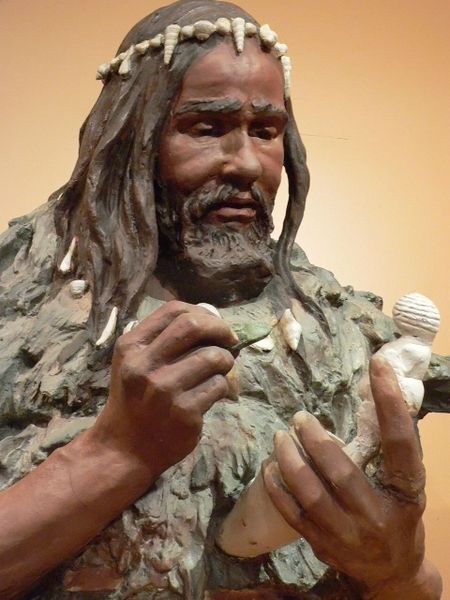The notions covered in this concept sheet go beyond those seen in secondary school. It is intended as a supplement for people who are curious to find out more.
The human being as we know it today is the result of a long evolution over several million years.
The Australopithecus is part of the hominid family.
The hominids are part of a family of primates that includes animal species such as humans, chimpanzees, gorillas and orangutans. There are also a number of extinct species, including Australopithecus.
There are several species of Australopithecus, including Australopithecus afarensis, Australopithecus africanus and Australopithecus anamensis. Australopithecus lived mainly in the rainforests of East Africa. They lived in small groups and their diet consisted of fruit, seeds, nuts and roots. They also used tools, which were made from rocks or tree branches that they gathered and worked. However, they did not have the same skills as Homo habilis. Australopithecus was the very first biped, meaning that he moved on two feet. He was covered in hair and closely resembled an ape.
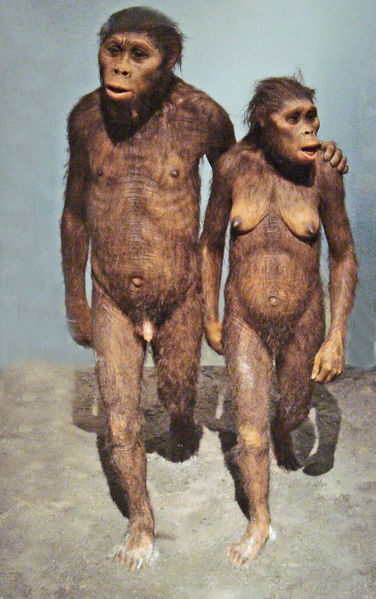
A reconstitution of Australopithecus
Lucy is an Australopithecus afarensis, whose part of the skeleton was discovered in 1974. She lived around 3.2 million years ago. She was given this name because, at the time of her discovery, the Beatles' song Lucy in the Sky with Diamonds was playing on the radio.
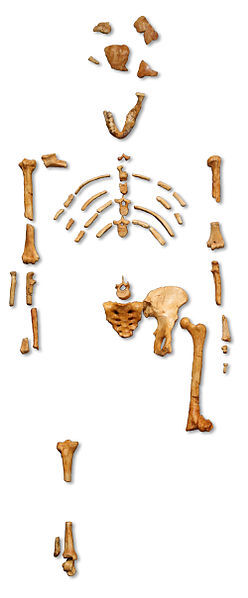
The remains of Lucy's skeleton
Homo habilis got his name from the fact that he was able to manipulate objects to make tools adapted to his needs. He lived between 2,500,000 and 1,600,000 BC.
Homo habilis used the pebble chopper in particular: using rocks, he struck a pebble and split parts of it to obtain sharp edges. This tool was used for cutting meat, among other things.
Homo habilis lived in the forests and savannahs of Africa. He lived by foraging or gathering, which means he was constantly on the lookout for food. He did not hunt, but was a scavenger, which means that he picked up the carcasses of animals that have been killed by other predators. Moreover, he did not really have a language: instead, he communicated through sounds accompanied by gestures.
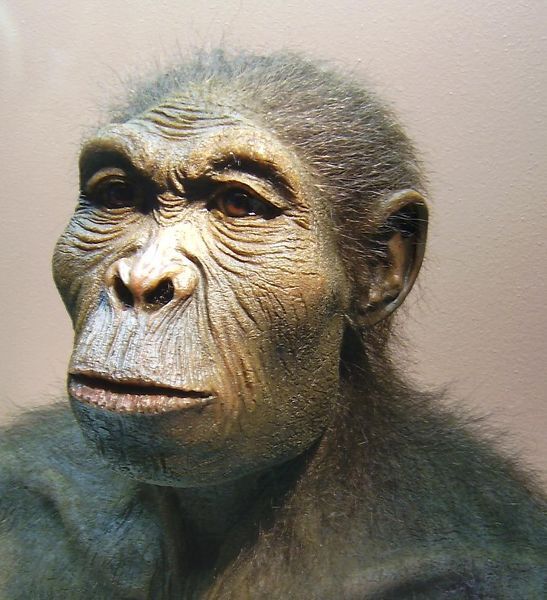
A reconstruction of a Homo habilis
Homo erectus lived for 1.5 million years, between 1,700,000 and 200,000 BC. Being less hairy than Homo habilis and Australopithecus, he more closely resembles today's humans (Homo sapiens). The need to communicate during group hunting led Homo erectus to use a fairly well-developed form of language. Meat became an important part of his diet.
Homo erectus lived in Africa, Asia and Europe. 500,000 years ago, Homo erectus made a major discovery: fire. In fact, he was the first to master it. This discovery gave him many advantages: fire warmed him, kept dangerous animals away, enabled him to cook meat and could harden the points of wooden weapons. He also perfected stone cutting by producing the biface. The biface became a tool with which to make other tools, notably sharper spears.
With Homo erectus came a form of division of labour and a form of power. An individual's work will determine his or her power within the group.
Homo neanderthalis was the closest specie to humans, but he was not their ancestor. He did, however, live alongside the true ancestor of humans, Homo sapiens. He lived between 200,000 and 30,000 BC in Europe and the Near East. His disappearance remains a mystery today.
Neanderthal is a prehistoric site in Germany where, in 1856, the first human fossil skeleton of the genus known as Neanderthal man was discovered.
His diet was based primarily on meat, although he was also a forager or gatherer. With his many tools, such as axes and spears, he was able to hunt large game (mammoth, deer, reindeer). As with Homo erectus, work determines the power of individuals within the group. As a result, the best hunter dominates the group.
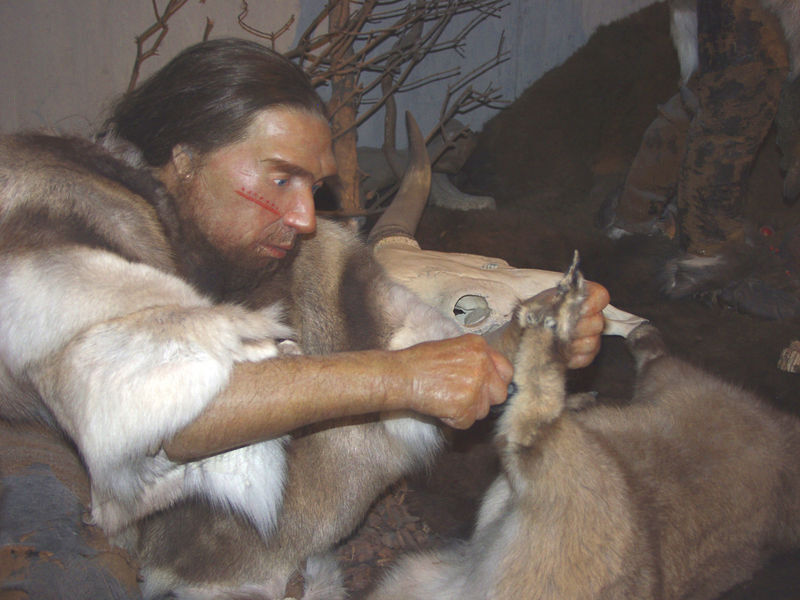
Reconstruction of a Neanderthal man
The Neanderthal era brought with it a new practice: burying the dead, whether men or women, young or old.
Homo sapiens has the same physical characteristics as modern humans. He first appeared around 200,000 BC, and populated all continents except Antarctica, travelling on the glaciers that linked the continents at the time. With the disappearance of Neanderthal man around 30,000 BC, Homo sapiens is the only representative of the human race.
The production of tools increased considerably with Homo sapiens. In fact, tools multiplied, enabling them, among other things, to make clothing and dwellings adapted to more difficult climates. To make their tools, they used polished stone, ivory, animal antlers and even bone. They were nomadic, but stayed in one place for longer. As a result, their hunting techniques were refined. New weapons make it possible to shoot large animals from a distance, reducing the risks involved in hunting.
There was a greater division of labour: men and women had different tasks that complemented each other. According to archaeologists, the men hunted and made tools, while the women were responsible for foraging or gathering and looking after the children.
With everything they produced (tools, weapons, jewellery, clothing), Homo sapiens traded with other groups. Many of these objects have been found in burial sites. This has revealed that there was already a social hierarchy at this time. People in positions of power were buried with a number of objects such as jewellery and special clothing.
Language developed more and more, and this had several consequences. Firstly, humans were able to exchange more information, which was very useful, especially when hunting. Also, a culture began to emerge, and this culture, as well as many other forms of knowledge, began to be transmitted orally.
The first works of human art date back to 29,000 BC. Many of these works (engravings, rock paintings) have been found in caves where groups of people lived. This is particularly true of the renowned Lascaux cave in France.
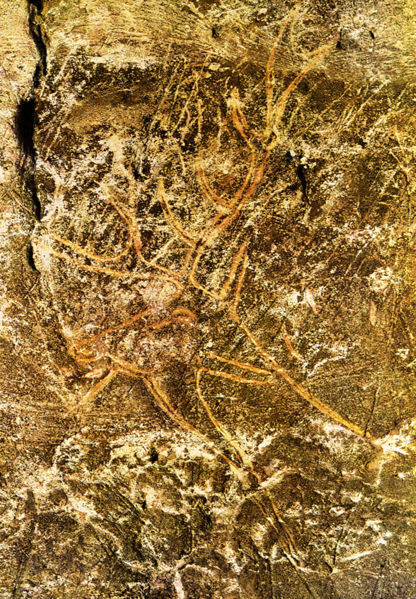
Painting of a deer found in the Lascaux cave


